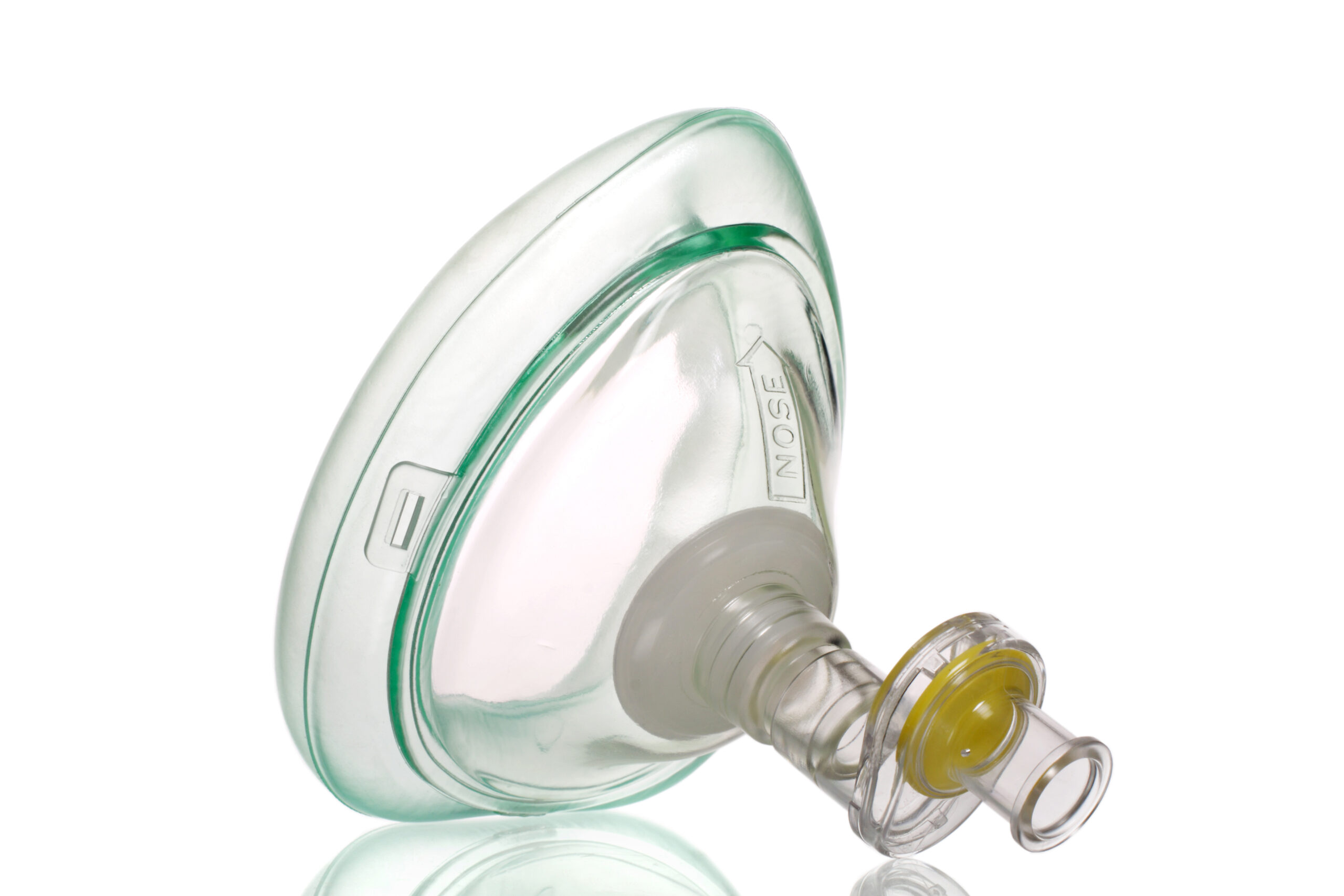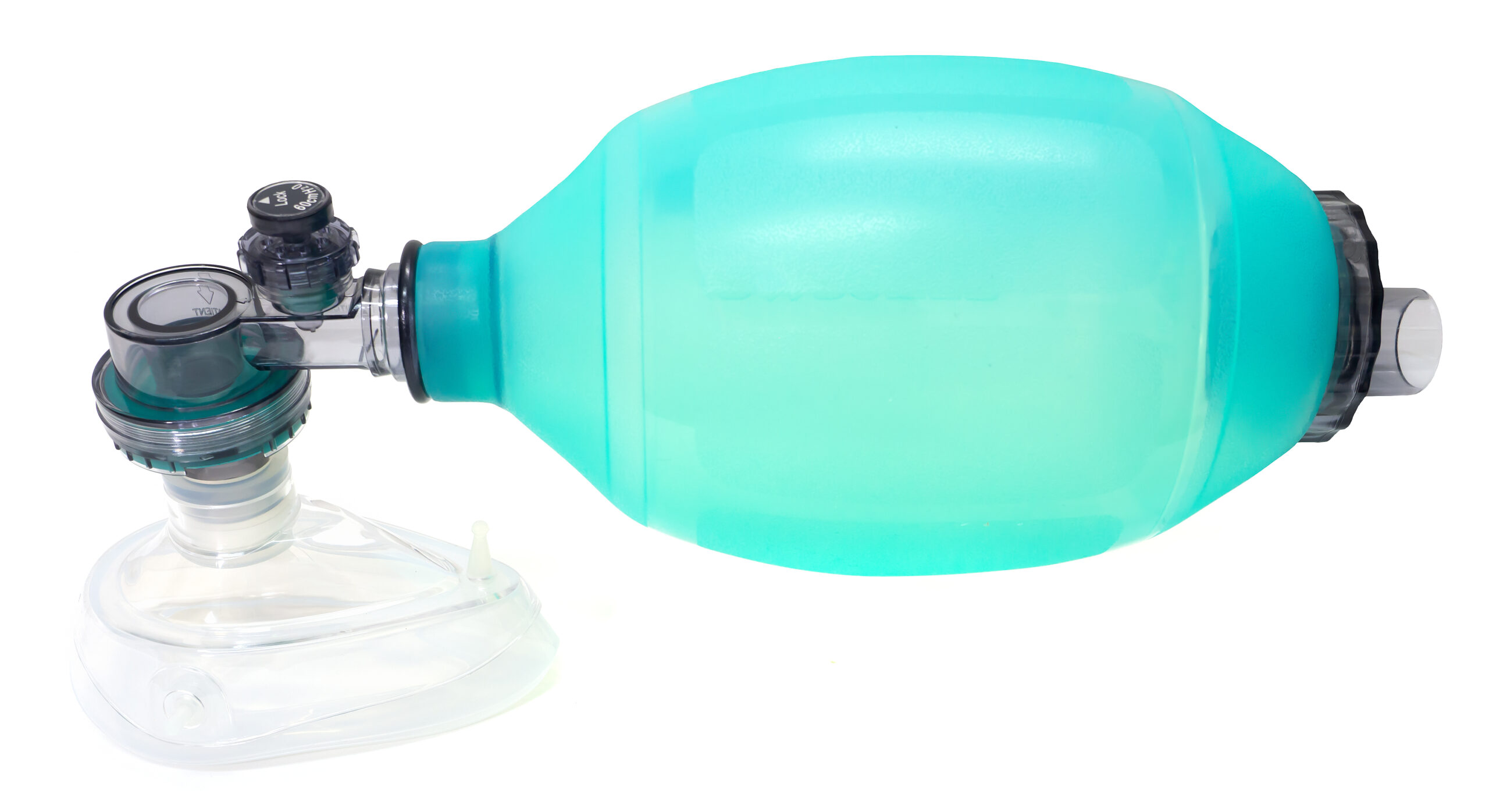Ventilating the Patient
Opening the Airway
Opening the patient’s airway ensures the flow of air during assisted breaths. Maneuvers that can help the rescuer maintain a patient’s airway while giving assisted ventilation include the head tilt-chin lift maneuver and the jaw-thrust maneuver. The jaw-thrust maneuver will protect the patient’s cervical spine in case of injury.
Related Video – Rescue Breathing for Adults
Barrier Devices
Barrier devices include a pocket mask with a one-way valve. This device protects the rescuer from contamination between the patient and the rescuer while giving mouth-to-mouth ventilation. 
Pocket Mask With One-Way Valve
Bag-Mask Devices and Techniques
When performing one-rescuer CPR, the rescuer delivering rescue breaths should use a bag-mask device, if available. Important points for providing ventilations:
- The rescuer performs 30 high-quality compressions at a rate of 100–120/min and a depth of 2 inches.
- The mask is sealed against the patient’s face by forming a “C” shape with the thumb and index finger of one hand and pressing down firmly on the top and bottom edges of the mask.
- If the patient does not have a neck injury, the airway is opened using the head tilt-chin lift.
- Two breaths over 1 second each are provided while watching for chest rise.

Bag-Mask Device
If two or more rescuers are available with a bag-mask device, the first rescuer should continue compressions. At the same time, the second rescuer seals the mask over the patient’s face and delivers 2 rescue breaths after every 30 compressions. Compressors should be switched out after 5 cycles or 2 minutes, taking care to limit switching time to under 5 seconds.